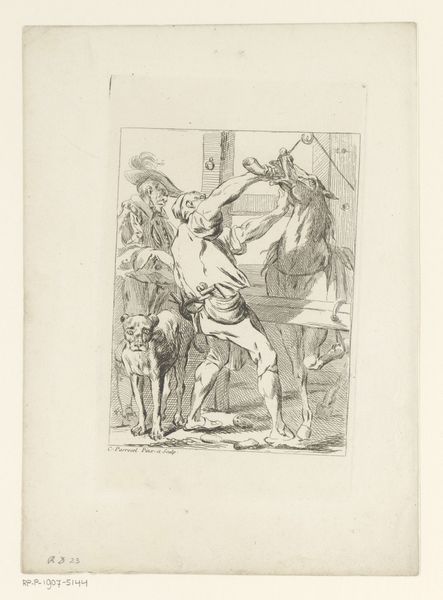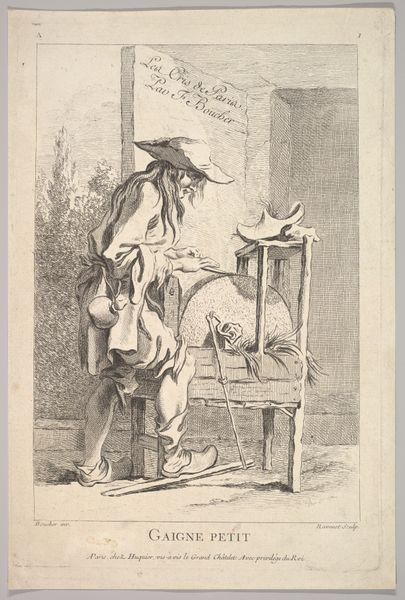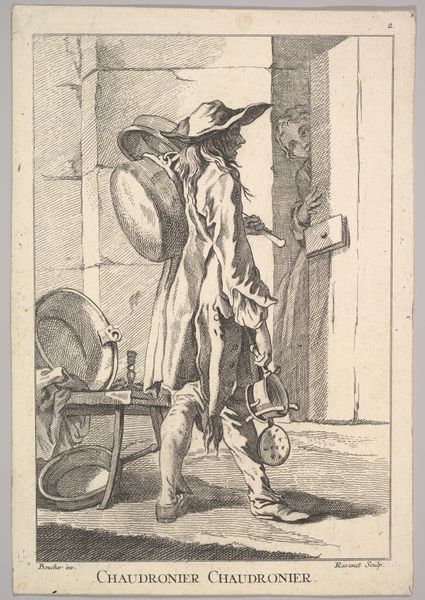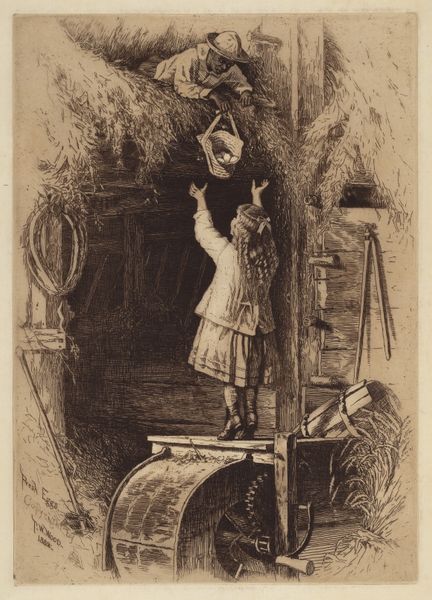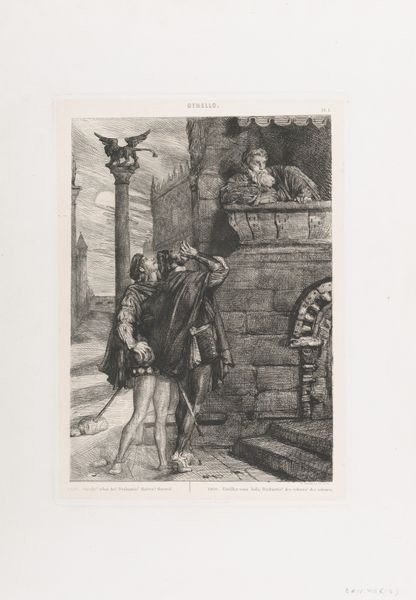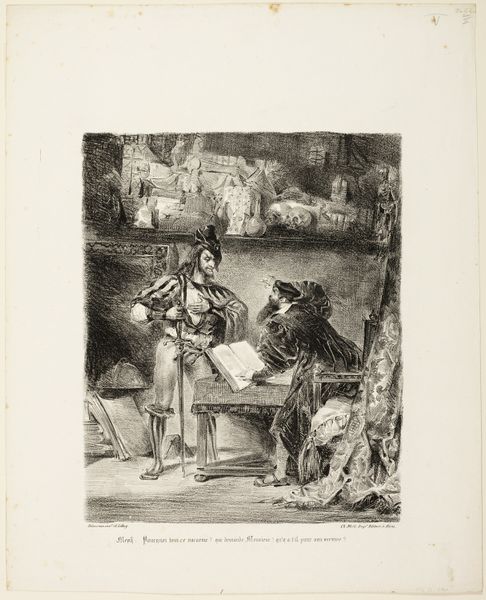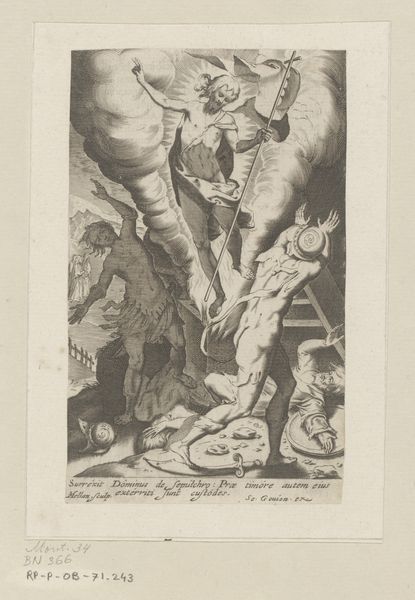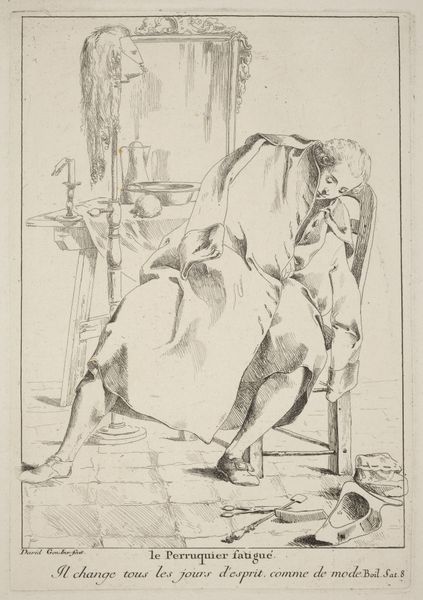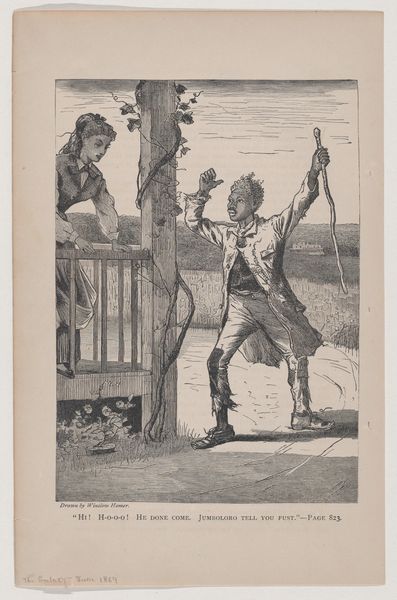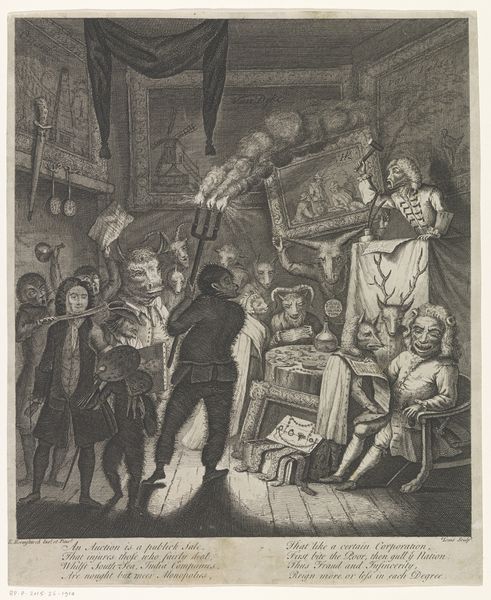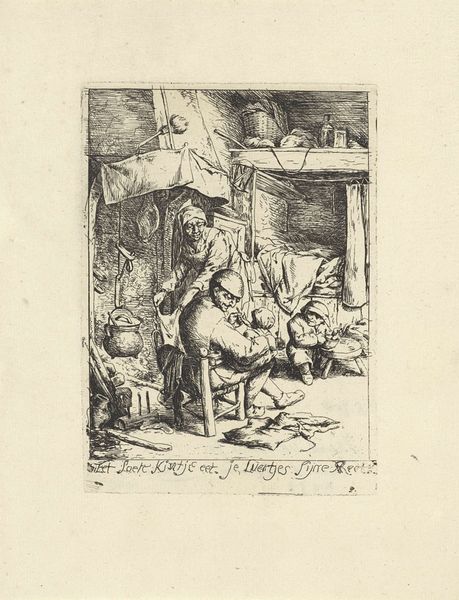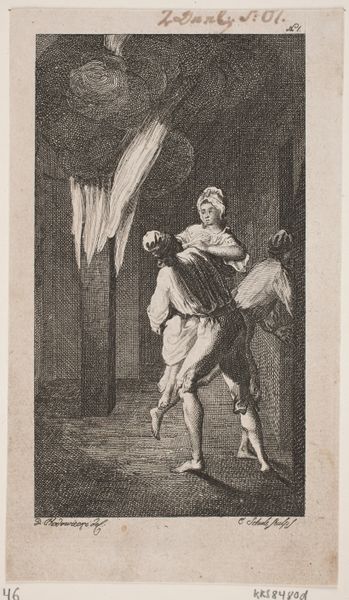
Reverse copy of the Frontispiece: Gaigne Petit, from Le Cris de Paris (The Cries of Paris), plate 1 1721 - 1774
0:00
0:00
drawing, print, engraving
#
drawing
#
baroque
# print
#
caricature
#
genre-painting
#
engraving
Dimensions: Sheet: 10 3/4 x 7 7/16 in. (27.3 x 18.9 cm) trimmed
Copyright: Public Domain
Editor: So this engraving, "Reverse copy of the Frontispiece: Gaigne Petit, from Le Cris de Paris," was created by Simon Francis Ravenet sometime between 1721 and 1774. There's a man operating what looks like a sharpening stone, but his posture and attire have an almost satirical quality to them. I find the entire composition a bit bleak. How would you interpret this work? Curator: Well, given the historical context, it’s highly probable that we’re looking at social commentary, especially considering that it’s part of "Le Cris de Paris" series. These works often depicted the everyday lives and labors of street vendors and tradespeople in Paris. Is the artist trying to convey something about the lives of working-class people, about the 'cries' of their existence, through this particular image? Editor: That makes sense, given the title! The “cries.” So it is both a literal reference to street vendors calling out their wares and also a metaphor? Curator: Precisely! Notice the almost grotesque exaggeration of his features and clothing, creating a caricature. It exaggerates and arguably critiques the social standing of such a commoner. It’s less about accurate representation and more about communicating something about social status or possibly the drudgery of daily labor. How do you think the piece engages with the established Baroque style, known for its grandeur? Editor: That’s a clever question! In contrast to glorifying figures, which Baroque art usually did, this piece seemingly flips the script by turning this man into… well, something to be looked down on. Curator: Exactly! This image really challenges the typical presentation and purpose of art. Rather than reinforcing the status quo, it holds a mirror, albeit a distorted one, to Parisian society. I'd say it offers commentary on economic and class structures through visual means. Editor: I didn't consider the political implications of something so seemingly simple. It’s fascinating to think about how the artist used genre painting as a form of social critique. Curator: Indeed, this image opens up so many possible readings about the politics of imagery and representation in 18th-century Paris. There is much more than meets the eye to those pieces.
Comments
No comments
Be the first to comment and join the conversation on the ultimate creative platform.
